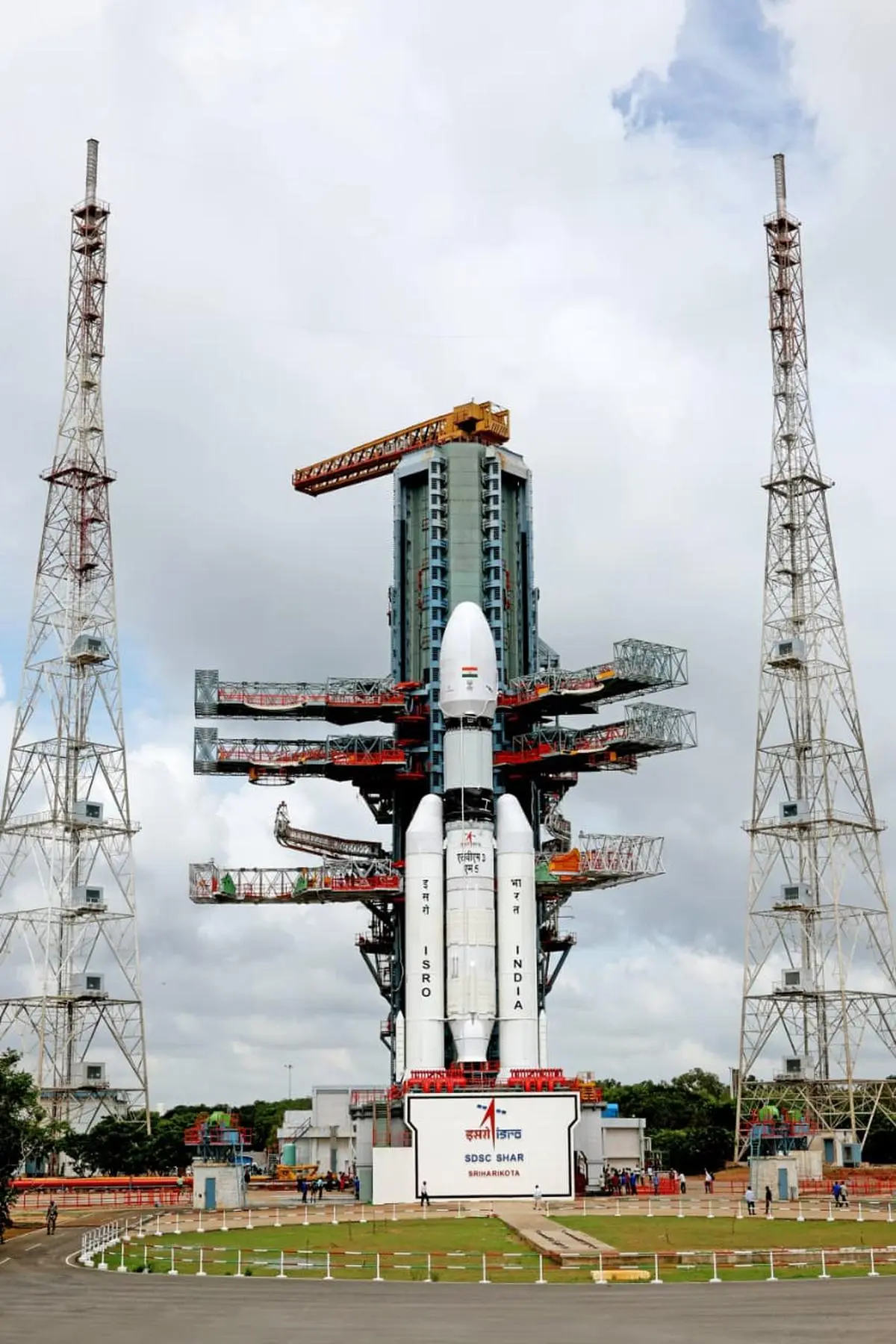ISRO readies LVM3-M5 for launch of heaviest communication satellite CMS-03 (GSAT-7R)

IN NEWS: ISRO readies LVM3-M5 for launch of heaviest communication satellite CMS-03 (GSAT-7R)
Analysis
- Context
- The Indian Space Research Organisation (ISRO) is preparing to launch its heaviest communication satellite CMS-03 (also known as GSAT-7R) on November 2, 2025, from the Satish Dhawan Space Centre (SDSC), Sriharikota.
- The launch will be conducted using the LVM3-M5 launch vehicle, India’s most powerful operational rocket, marking its fifth operational mission.
- About CMS-03 (GSAT-7R)
- Weight: Approximately 4,410 kg, making it India’s heaviest communication satellite.
- Type: Multi-band military communication satellite designed to provide secure and high-capacity data transmission.
- Coverage: Offers critical communication support across the Indian landmass and wide oceanic regions, crucial for naval and defence operations.
- Purpose: Enhances real-time, encrypted communication capabilities for the Indian Navy, Air Force, and Army, strengthening joint operational readiness and situational awareness.
- About the Launch Vehicle – LVM3-M5
- Full Form: Launch Vehicle Mark-3 (formerly GSLV Mk-III).
- Specifications:
- Height – 43.5 metres
- Lift-off mass – 642 tonnes
- Payload capability – ~4 to 4.5 tonnes to GTO
- Mission Objective: To place the CMS-03 satellite into a Geo-synchronous Transfer Orbit (GTO).
- Launch Pad: Second Launch Pad, Satish Dhawan Space Centre (SHAR).
- Significance:
- Continues the LVM3’s legacy after the success of Chandrayaan-3, which made India the first country to land near the lunar south pole.
- Demonstrates India’s capability in launching heavy military-grade satellites indigenously.
- Strategic Importance
- Defence Communications Backbone: CMS-03 is designed to bolster India’s secure defence communication network, particularly in maritime and remote regions.
- Self-Reliance in Strategic Space Assets: Reduces dependence on foreign satellites and private networks for sensitive communications.
- Operational Integration: Facilitates coordination between the three branches of the armed forces through high-bandwidth, encrypted communication links.
- Maritime Domain Awareness: Strengthens India’s surveillance and command capabilities across the Indian Ocean Region (IOR).
- Recent Developments
- The fully integrated LVM3-M5 vehicle with CMS-03 was rolled out to the launch pad on October 26, 2025, for final checks and pre-launch procedures.
- The launch is expected to further solidify India’s standing as a major player in the defence and space communication ecosystem.
Static / Background Information
- ISRO (Indian Space Research Organisation):
- Established in 1969, headquartered in Bengaluru, Karnataka.
- Key Missions: Chandrayaan-3 (2023), Aditya-L1 (2023), Mangalyaan (2013), PSLV-C37 record launch (2017).
- Focus Areas: Satellite communication, navigation, remote sensing, planetary exploration, and human spaceflight.
- LVM3 (Launch Vehicle Mark-3):
- Known as India’s heavy-lift launcher, capable of deploying payloads up to 10 tonnes to LEO and 4 tonnes to GTO.
- Used for key missions like Chandrayaan-2, Chandrayaan-3, and the upcoming Gaganyaan human spaceflight programme.
- Represents India’s transition to next-generation launch capabilities.
- GSAT Series:
- A family of geostationary communication satellites developed by ISRO to meet India’s telecommunication, broadcasting, and security needs.
- GSAT-7, GSAT-7A, and now GSAT-7R (CMS-03) serve as part of India’s military satellite network.
Updated – 29 Oct 2025 ; 08:58 PM | Source: The Hindu Business Line